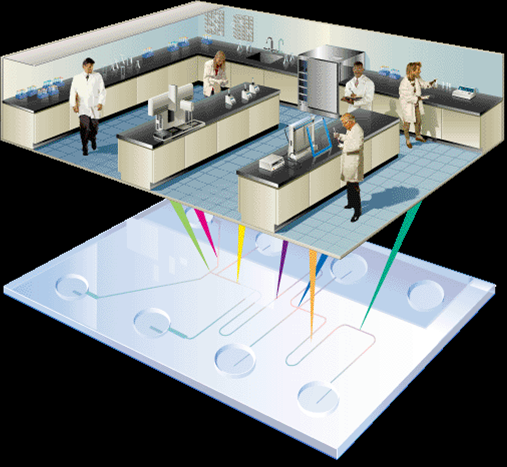When someone asks you to think of a laboratory, you might imagine a large room with lots of equipment and people in lab coats. This has been the way things worked for centuries. Now a days, we have the technology to shrink everything that would normally go in a lab to fit in the palm of your hand. These devices are called lab-on-a-chip.
My work is studying behaviour and control of small amounts of liquid that pass through a tiny pipe system, this field is called microfluidics. At the moment, most of these devices require researchers to use microscopes to check the results. My work is adding sensors to create electrical signals that can give out a number so that we can get more accurate results.
Using the same methods, I can also control and manipulate the liquid going through these pipes very precisely. This is needed to simulate different environments that some reactions might need to take place. By combining all of this, we can create these ‘lab-on-a-chip’ devices so that tests can be done anywhere in the world without needing big expensive equipment.
One of the main uses of microfluidic devices is in the pharmaceutical and medical industry to test for new cures as well as detect if people are infected with certain diseases. This is very relevant in our current situation as the work done to test if people have had Covid-19 is based on this technology.
NanoDTC Associate, a2018

